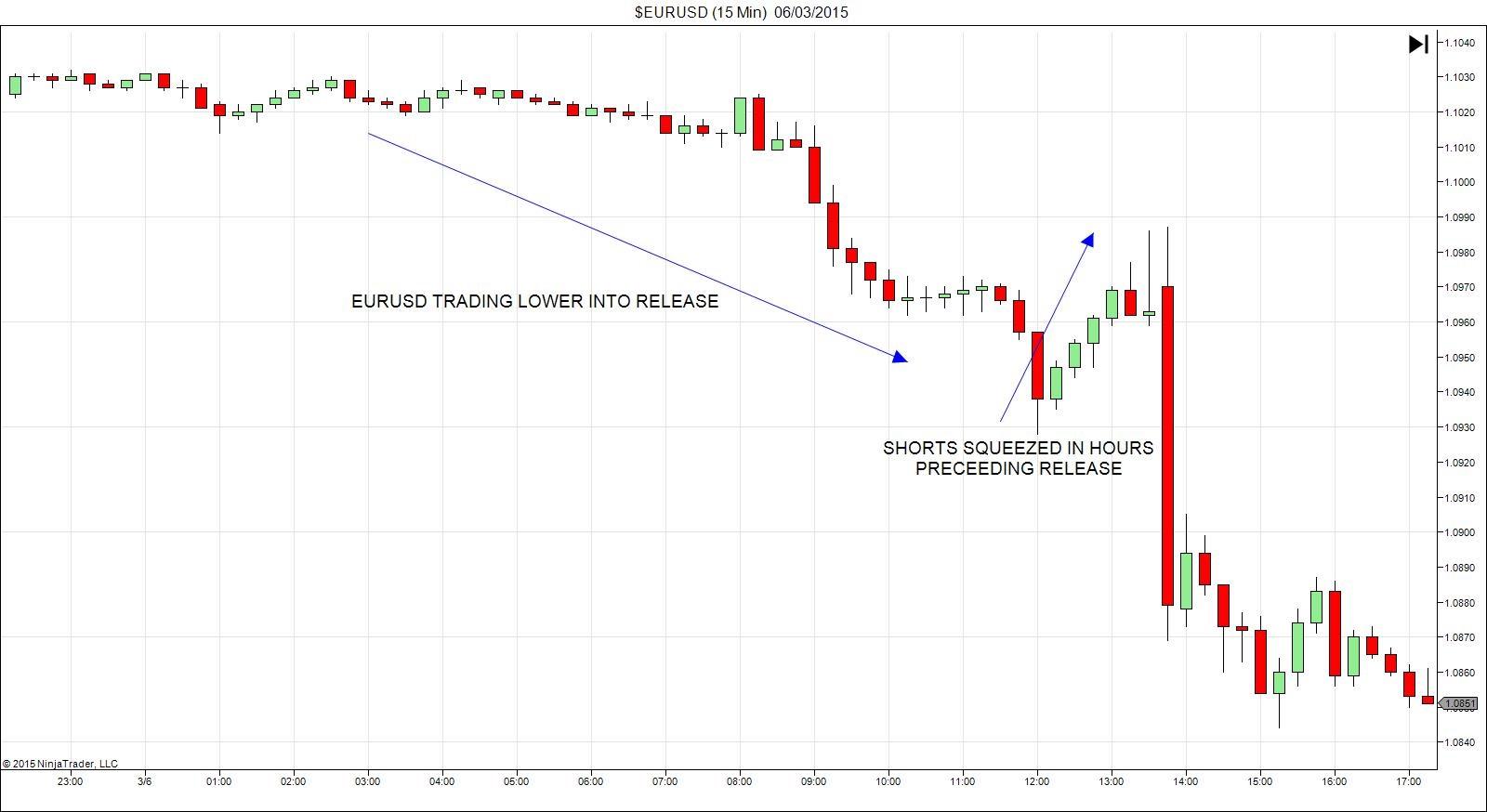What Is The Non Farm Payroll Report?
NFP stands for Non-Farm Payrolls, which refers to a USA data release referring to labour statistics.
NFP is just one of the data releases relating to employment that affects the Forex markets. Labour statistics give an important insight into a country’s economic health, as jobs (and the creation of jobs) are key to a traders’ opinion of the medium to long-term economic outlook for a country.
Employment is the backbone of economic growth – when unemployment levels in a particular country rise, this has an adverse effect on the country’s economic growth. This means that traders will have a dim view of the economic health of the country and will begin to sell its currency, which in turn weakens the currency in relation to others.
Other signs of economic growth are often viewed with a little suspicion by the market if employment figures are not at a healthy level.
Employment figures can also have an impact on interest rates, as higher employment will lead to higher interest rates because of central bank policies aimed at balancing inflation with growth. This is a significant factor for Forex traders, because interest rates are the most important rates when it comes to Forex trading.
For all of these reasons, it is important for traders to keep an eye on employment levels, and one method of doing so is through NFP.
NFP (or Non-Farm Payrolls) is a monthly report researched, recorded and reported by the US Bureau of Labor Statistics on the first Friday of every month. This data release is intended to represent all paid US workers of any business, with the exception of the following:
- Government employees
- Private (household) employees
- Non-profit employees
- Farm employees (hence the name)
The report includes estimates of the average working week and the average (weekly) earnings of all non-farm employees. The data in the report typically accounts for about 80% of all US employees, whose labour produces the GDP (Gross Domestic Product) of the US.
NFP is a very significant employment data set because of its central importance to the movement of the currency market, and the US Dollar in particular.
Why Is NFP Data So Important?
The figure is hotly anticipated by traders each month as the figure is seen as key to gauging Fed monetary policy and therefore US Dollar strength. As America is the World’s largest economy and the US Dollar is the global reserve currency the monthly release of the NFP is a focal point of all market participants from independent speculators right through to Investment Banks, Multinational corporations and Central Banks. This level of interest creates two key areas of importance regarding the NFPs:
1 – Anticipation
2 – Reaction
The battle for positioning heading into the figure can cause skewed trading conditions in the days leading up to the release. Participants looking to establish positions pre-release can cause unexpected directional flows in a currency pair. For example, if markets are expecting a strong number we could see people trying to sell EURUSD ahead of the release expecting USD to strengthen against EUR causing EURUSD to go lower. The volume of this positioning is key. If we see large institutional players positioning then this tends to have a bigger effect on the currency pair than if we are seeing smaller speculative players positioning. The actual size of the positioning itself is also important, if Institutional players are positioning with reduced size it will have less of an impact than if we see them positioning with greater size.
This is where having access to great data-feeds comes in so handy as it’s possible to gauge the level of positioning heading into the figure through analysis of volume tools.
Another situation we can see heading into the figure is large Institutional players reducing positions and taking profit heading into a figure release. For example, if Institutional players are heavily short EURUSD heading into the figure, and they are expecting a weak NFP result, we typically see them reducing position size heading into the result so that they don’t suffer large negative equity swings on the results (if the result is as they anticipated). Often times the reaction to the figure will only cause a brief but sometimes large spike in the price of a currency pair and so a reduction in position size allows the Institutional players to maintain their overall (long-term) position, looking for the market to correct when the news has been digested and the longer term fundamental picture restores balance to the market and they see a resumption of their anticipated directional bias in the currency pair.
This reduction in position size heading into a figure release can itself cause a spike in the price of a currency pair, referred to as a squeeze, and is often accompanied by speculator action which can extend the moves even more. So for example we may see EURUSD weaker in the days heading into the NFP release but in the hours beforehand as positioning on shorts is reduced, we see price rising. We then see speculators “piggy-backing” the move which drives the spike even further.
Below is an example.

Here we can see, exactly as discussed above, a situation where EURUSD is trending downward heading into the figure release but suffers a sharp squeeze hours before hand, only to return to trending downward post release.
This type of action can create choppy and difficult trading conditions for beginner traders who aren’t aware of what is likely to be going on behind the scenes to cause thee moves and this is where having great Order Flow understanding and Order Flow tools can really help to keep you out of trouble in these conditions.
All comments, charts and analysis on this website are purely provided to demonstrate our own personal thoughts and views of the market and should in no way be treated as recommendations or advice. Please do not trade based solely on any information provided within this site, always do your own analysis.
Editors’ Picks

EUR/USD flatlines below 1.1800 ahead of Fed Minutes
EUR/USD struggles to find direction and continues to move sideways below 1.1800 for the second consecutive day on Tuesday as markets remain in holiday mood. Later in the American session, the Federal Reserve will publish the minutes of the December policy meeting.

GBP/USD retreats to 1.3500 area following earlier climb
GBP/USD loses its traction and trades flat on the day near 1.3500 after rising to the 1.3530 area early Tuesday. Trading conditions remain thin ahead of the New Year holiday, limiting the pair's volatility. The Fed will publish December meeting minutes in the late American session.

Gold rebounds toward $4,400 following sharp correction
Gold gathers recovery momentum and advances toward $4,400 on Tuesday after losing more than 4% on Monday. Increased margin requirements on gold and silver futures by the Chicago Mercantile Exchange Group, one of the world’s largest trading floors for commodities, prompted widespread profit-taking and portfolio rebalancing.

Tron steadies as Justin Sun invests $18 million in Tron Inc.
Tron (TRX) trades above $0.2800 at press time on Monday, hovering below the 50-day Exponential Moving Average (EMA) at $0.2859.

Bitcoin Price Annual Forecast: BTC holds long-term bullish structure heading into 2026
Bitcoin (BTC) is wrapping up 2025 as one of its most eventful years, defined by unprecedented institutional participation, major regulatory developments, and extreme price volatility.
RECOMMENDED LESSONS
Making money in forex is easy if you know how the bankers trade!
I’m often mystified in my educational forex articles why so many traders struggle to make consistent money out of forex trading. The answer has more to do with what they don’t know than what they do know. After working in investment banks for 20 years many of which were as a Chief trader its second knowledge how to extract cash out of the market.
5 Forex News Events You Need To Know
In the fast moving world of currency markets where huge moves can seemingly come from nowhere, it is extremely important for new traders to learn about the various economic indicators and forex news events and releases that shape the markets. Indeed, quickly getting a handle on which data to look out for, what it means, and how to trade it can see new traders quickly become far more profitable and sets up the road to long term success.
Top 10 Chart Patterns Every Trader Should Know
Chart patterns are one of the most effective trading tools for a trader. They are pure price-action, and form on the basis of underlying buying and selling pressure. Chart patterns have a proven track-record, and traders use them to identify continuation or reversal signals, to open positions and identify price targets.
7 Ways to Avoid Forex Scams
The forex industry is recently seeing more and more scams. Here are 7 ways to avoid losing your money in such scams: Forex scams are becoming frequent. Michael Greenberg reports on luxurious expenses, including a submarine bought from the money taken from forex traders. Here’s another report of a forex fraud. So, how can we avoid falling in such forex scams?
What Are the 10 Fatal Mistakes Traders Make
Trading is exciting. Trading is hard. Trading is extremely hard. Some say that it takes more than 10,000 hours to master. Others believe that trading is the way to quick riches. They might be both wrong. What is important to know that no matter how experienced you are, mistakes will be part of the trading process.
The challenge: Timing the market and trader psychology
Successful trading often comes down to timing – entering and exiting trades at the right moments. Yet timing the market is notoriously difficult, largely because human psychology can derail even the best plans. Two powerful emotions in particular – fear and greed – tend to drive trading decisions off course.
